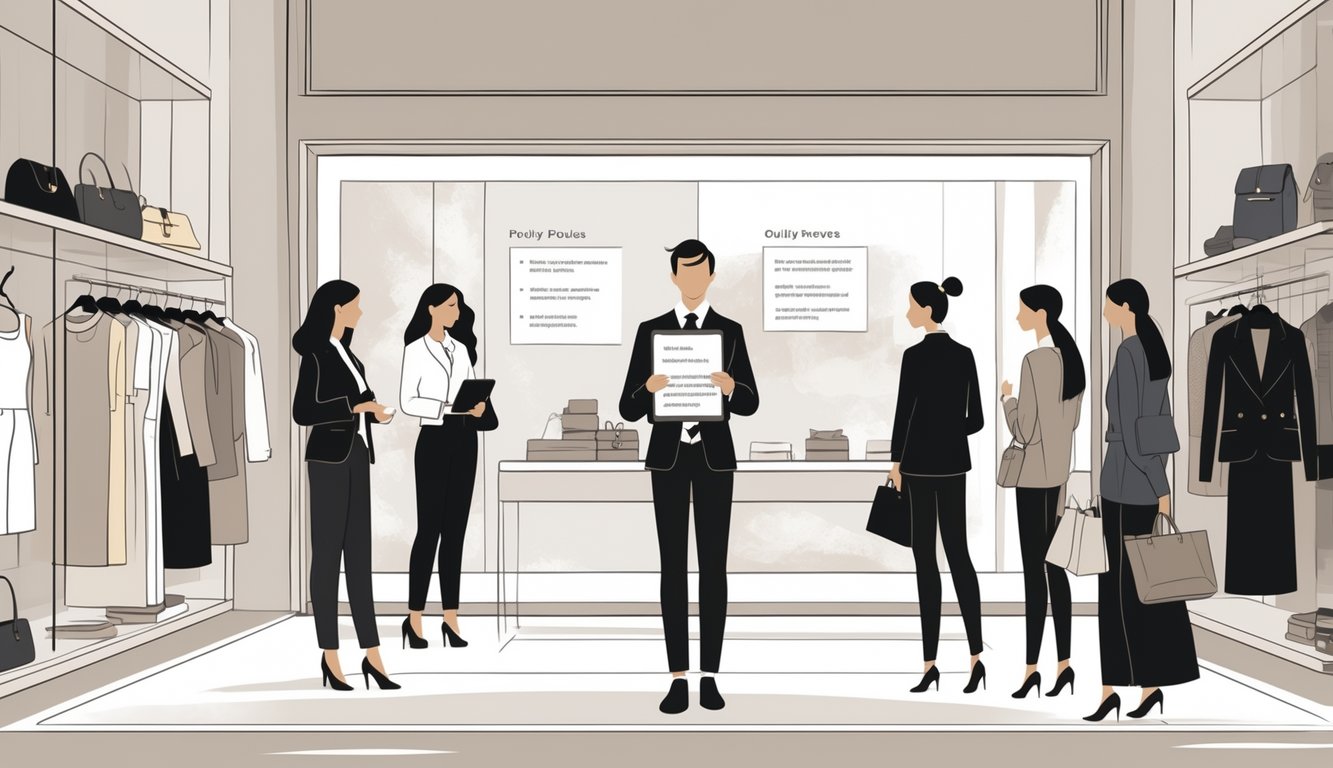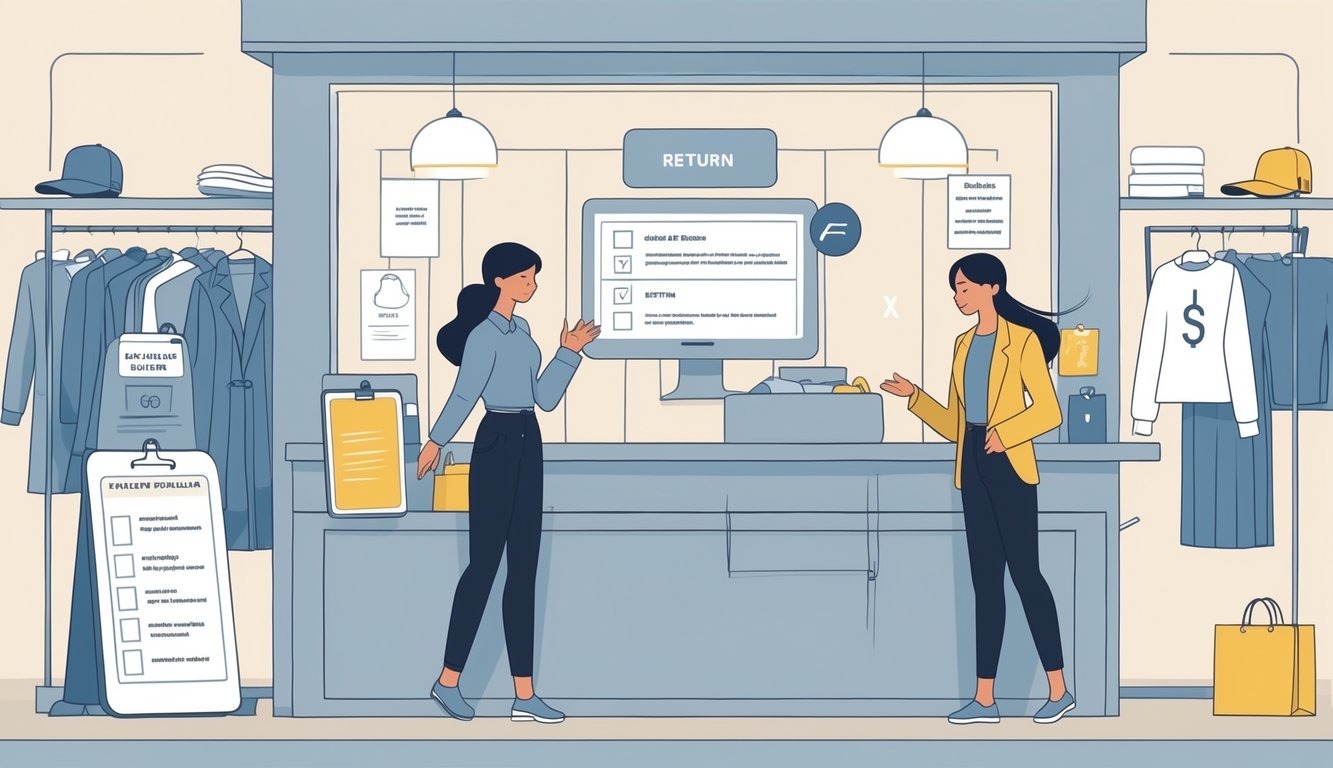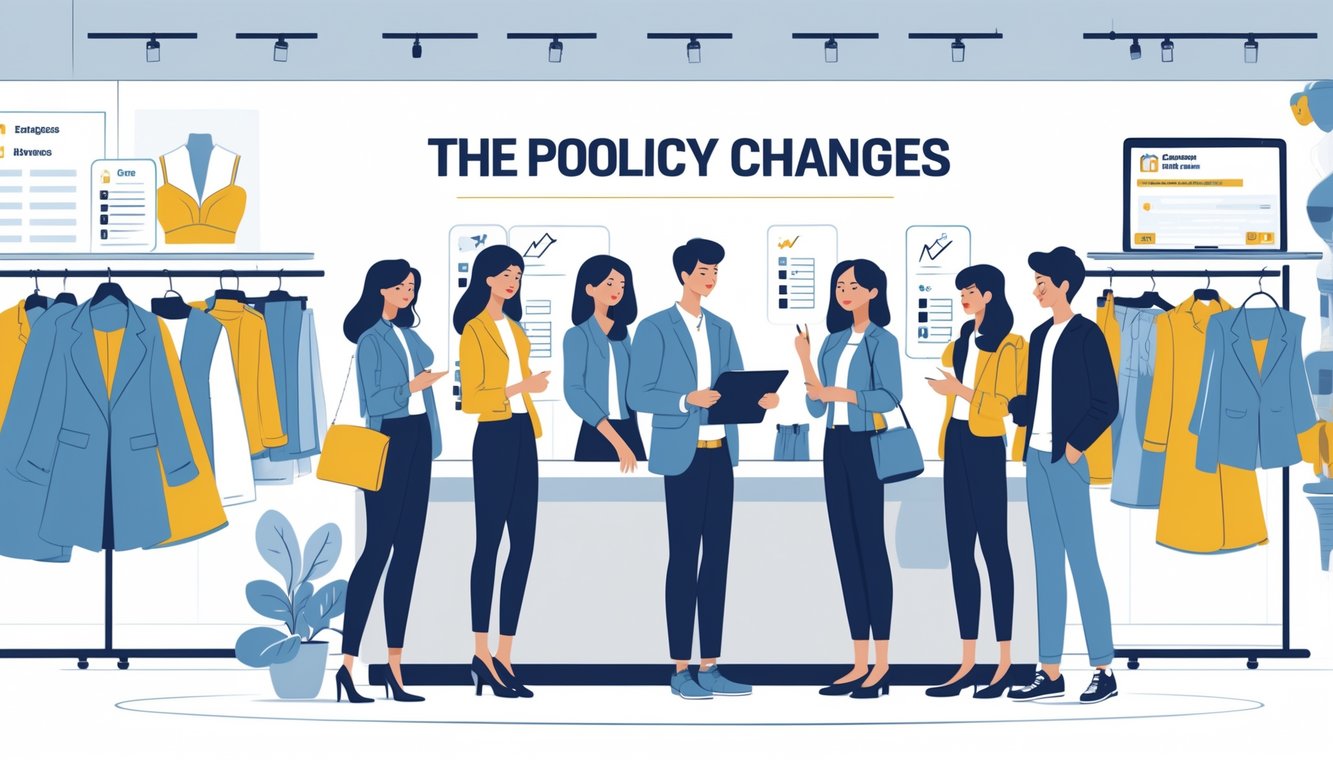
Alright, so, let’s get this out of the way: I click “buy now,” wait for my new blazer, try it on, and—yep, total potato sack. So now I’m out ten bucks just to send it back? Since when did “free returns” mean “secret fee” or “you better have the original sticker, or else”? I swear, retailers are losing it over returns—like, $900 billion in returns in 2024? That’s not even a real number to me. Am I supposed to have a tape measure on hand, know the circumference of my ankle, and memorize a novella’s worth of policy just so I don’t get flagged as a “problem shopper”? Brands are rewriting their return rules on the sly—fees, deadlines, “fair use” bans—because too many of us (guilty as charged) treat online shopping like a personal fitting room.
My friends? They just roll their eyes and say, “That’s retail for you.” Meanwhile, I’m knee-deep in pants I don’t want, trying to decode if I’m about to get an angry email or just a silent ban. The National Retail Federation claims return abuse—tag switching, “wardrobing” (that’s wearing it out, then returning)—costs more than $100 billion a year. Is anyone actually reading these new rules except journalists and that one friend who keeps a spreadsheet of everything? Because it sure isn’t me.
Sometimes I wonder if online stores want us to just give up on returns altogether. I can’t even swap a shirt if I forget my password and miss the 14-day window. Return policies? They change every week, and unless you’re starting a petition—like this campaign against online return charges and bans—nobody cares. Socks, laptops, shoes—wait, am I risking my account just for spinning a label the wrong way now?
Understanding Recent Changes in Fashion Return Policies

Lately, I’ve noticed my favorite brands sneakily editing return policy pages—tiny changes, barely a notification. Suddenly, “free returns” is a myth, and my shopping feels a lot more like gambling than it did last summer.
Defining Fashion Return Policies
Return policies used to be simple: tags on, 30 days, ship it back, done. Now? Miss the deadline by a day and congrats, you just bought a $200 linen shirt you hate. Retailers like Zara, H&M, and even the snooty luxury brands now throw in lines like “no returns on worn items,” “must have original packaging,” or a weird QR code on every invoice. McKinsey says brands are tired of people ordering three pairs of jeans just to keep one. I mean, can you blame them? But also, come on. Even in-store drop-offs (they call it BORIS, which, why?) show up in my inbox now, with this vibe of “we’re watching you.”
Here’s how the rules look now:
| Category | Old Policy | New Policy |
|---|---|---|
| Shoes | 30 days, no wear | 14 days, unworn, tagged |
| Accessories | 60 days | Non-returnable if opened |
| Sale Items | 28 days | Final Sale |
Motivations Behind Policy Shifts
Why is this happening now? Apparently, return rates exploded. Deloitte said retail returns jumped 33% between 2020 and 2021. For brands, every order is now a headache—logistics, money, environmental guilt, all of it.
It’s not just “abuse”—though that word pops up everywhere. Customer service folks told me repeat returners can cost brands $1,400 a year per person (see ABC News), especially when stuff comes back obviously worn. Warehouses fill up with junk no one can resell, and online stores eat shipping costs twice over. Sometimes a suit shows up with a lipstick stain, and the manager just sighs.
Brands started flagging “serial returners.” So now, even if you follow every rule, you get shorter windows, stricter inspections, digital receipts, and “returns may be denied at our discretion.” Every press release says “it’s about better service,” but behind the scenes it’s all about lost inventory, fraud percentages, and “sustainability.” I can’t help feeling like I’m under a microscope every time I shop.
Trends Driving Policy Adjustments

It’s the little things that get me—suddenly brands act like I’m a criminal for returning a dress after one try-on. Shoppers push the limits, brands push back, and I’m left squinting at fine print, wondering if I missed a memo.
The Rise of Online Shopping and Returns
Click, add to cart, hope for the best. That’s my move, and I’m not alone. The National Retail Federation says online shopping is almost 30% of all retail, and returns for clothes hit 20%. Virtual fitting rooms? Cute in theory, but honestly, I just order three sizes, keep one. Not exactly revolutionary.
Every extra return label is a logistics nightmare—costs piling up behind the scenes. Neil Saunders, some industry guy, says brands are tightening up not just for profit but because everyone copies each other (retail online returns and logistics). So, yeah, they hate being stuck with piles of wrong-size pants.



